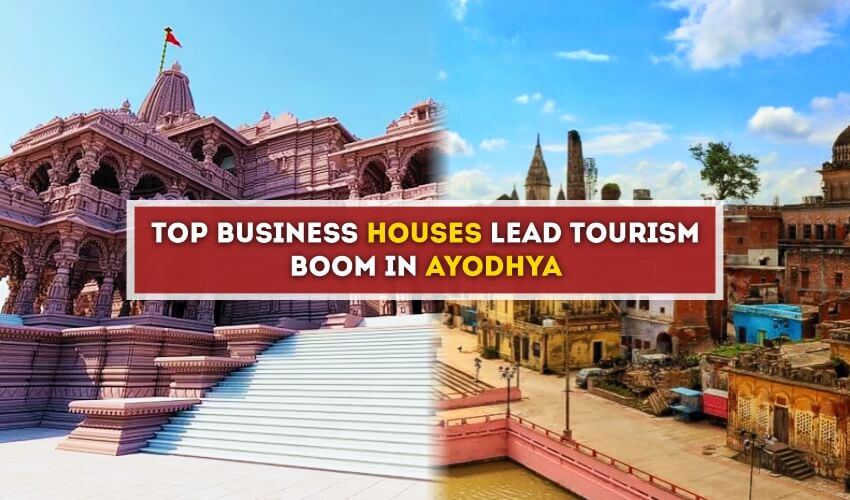As per the latest tourism trade figures, the Indian tourism market is likely to record a compound annual growth rate of 7-8 % with spiritual tourism estimated to grow at 9-10% for the next five years.
The consecration ceremony at the Ram Temple in Ayodhya on 22 January is likely to attract 2-2.5 crore tourists to the holy city. Local tourism experts say that this will take Ayodhya’s annual tourism potential to Rs 55,000 crore.
You will be amazed to know that for every 15 tourists, who headed to Uttar Pradesh in 2023, one headed to the temple town of Ayodhya.
According to Uttar Pradesh government sources, the development of the temple will impact the economic development of at least half a dozen districts around Ayodhya.
The tourism department is spending Rs 588 crore while other departments of the UP government are spending close to Rs 936 crore to improve the basic services for visitors to the holy city.
How has Tourist Footfall Increased in Ayodhya?
As per the state’s tourism data, only two lakh tourists visited Ayodhya in 2017, while the number jumped to 2.03 crore in 2022. Also, the state’s tourist footfall in 2023 surpassed the 32-crore mark in September. Out of this, Ayodhya’s contribution was 2.03 crore.
There are many reasons for this upsurge in tourist numbers. On one hand, a new Ayodhya was conceptualized under the head of Navya Ayodhya.
Secondly, the Uttar Pradesh government organized the Deepotsava which gave a global identity to the place. It also earned a place in the Guinness Book of World Records for the state.
Tourism is Driving Major Investments in Ayodhya
Several other hotel chains big and small, including the likes of Taj, Tata Group’s IHCL, Raddison, and ITC are looking to build multiple properties in the vicinity across price points, with significant interest from midscale and up-scale builders.
Deals have been inked with hotels such as Mariott International and Sarovar Hotels and Resorts. Scores of branded stores have already opened in the city.
Land in Ayodhya has tripled in value in the last three years. Locals are capitalizing on the limited land parcels by either holding on to their properties or quoting exorbitant rates.
The Ram Mandir inauguration is also expected to give a boost to local traders and manufacturers. The preliminary estimates from the Confederation of All India Traders (CAIT) place its economic impact to be over Rs 50,000 crore.
There are many factors influencing this boom including increased accessibility through improved infrastructure including the revamped railway station and the newly built airport at Ayodhya. The government schemes are also aimed at promoting newer spiritual destinations, making them a part of standard travel itineraries.
Future Prospects
According to industry experts, development in Ayodhya is expected to continue for the next 2-3 years before it can properly function as a tourist hotspot.
While there are an estimated 1,100-1,200 rooms or 25-50 hotels in the city right now, this is expected to more than double in the next three years to bridge the current demand-supply gap. Till then, most tourists are expected to plan day trips or stay in nearby cities.
Official sources said requests have been received from the governments of Nepal, Cambodia, Singapore, Sri Lanka, Indonesia, and Thailand for land to build their national guest houses in the holy city. The changing face of Ayodhya has triggered a wave of reverse migration because of which many natives are returning home to start their businesses.









